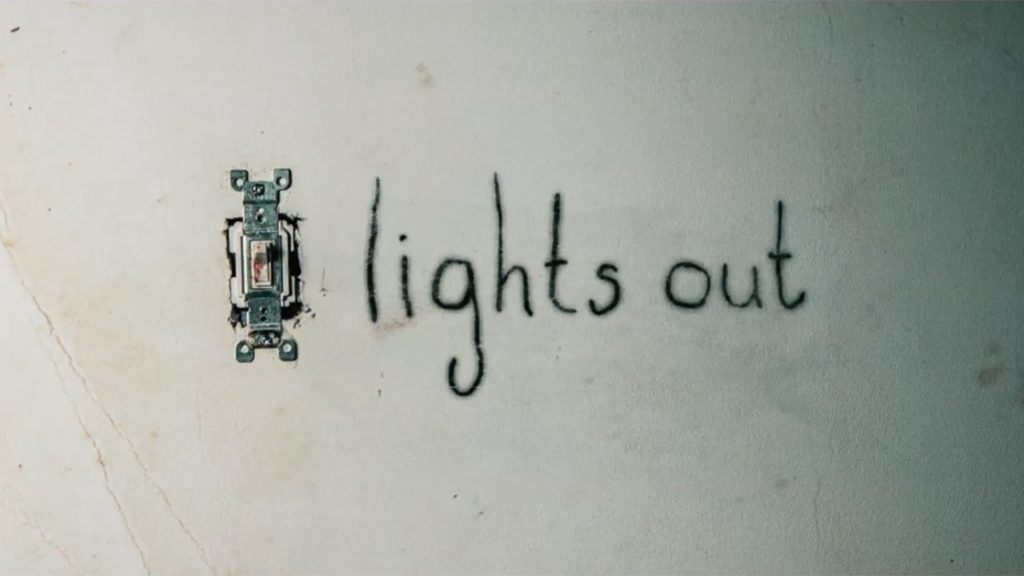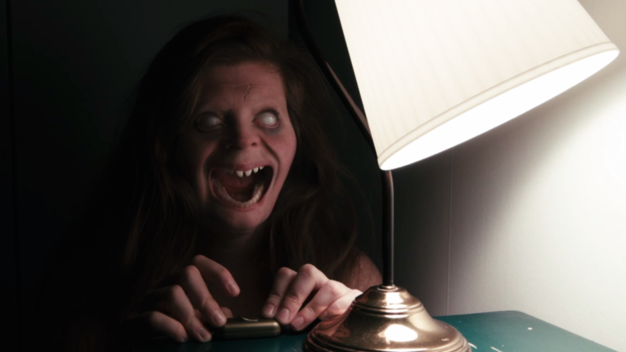
Expanding a short film into a full-length feature is a tricky proposition. What works over the course of a few minutes can just as easily fall apart when given an hour-and-a-half runtime. As such, I remained cautiously optimistic about David F. Sandberg’s Lights Out, despite how much I enjoyed his 2013 short film of the same name. Fortunately, this concept made the transition well, with the final film offering plenty of creative moments and solid scares for horror fans.
The film focuses on a malevolent being named Diana who can only be seen when, as the title suggests, the lights are out. Without giving too much away, the spirit is connected to Sophie, a woman she’s obsessed with and seeks to isolate from her family. The film opens with Diana killing Sophie’s second husband Paul (Billy Burke) in a scene that most closely recreates the original short film – and features a cameo by the original’s lead actress – and she spends the rest of the movie attempting to further isolate her.
Sophie has the closest connection to Diana, but the main focus falls on her children, Rebecca (Teresa Palmer) and Martin (Gabriel Bateman). Rebecca has mostly avoided her mother in recent years, plagued by unpleasant memories of her mother’s mental illness and seemingly imaginary friend Diana. However, when her half-brother begins to mention seeing Diana in the shadows, she decides to step up and figure out what’s going on.

In terms of plot, Lights Out follows plenty of standard horror movie tropes, but the film remains engaging thanks to the strength of its characters. Rebecca makes for a solid protagonist; while she’s lived an aimless life, her love for her brother and care for his well-being make it easy to root for her. Martin, meanwhile, has a perfect balance of innocence and awareness to make for a good child protagonist. And unlike most rocker boyfriends that pop up in horror films, Bret (Alexander DePersia) is an understanding, supportive character who you actually want to see make it to the end credits. Even better, it’s an intelligent group of characters that never leave you screaming at the screen in disbelief.
Of course, a horror movie lives and dies on the strength and creativity of its scares, and Lights Out doesn’t disappoint. There are a few jump scares, but the film succeeds by putting greater emphasis on creating tension and an unsettling atmosphere. Frequently, we’re left fully aware of where Diana is, but are unsure of how or when the lights are going to give out and let her attack. It’s a simple set-up, but one that remains effective until the end.
Even better, the film makes great use of light and shadow throughout, creating a number of inventive scenarios for the characters to face Diana in. A flashing neon sign, a cell phone, and car headlights are all used for protection in creative and amusing ways, and the explanation for why Diana is bulletproof makes for a brilliantly simple but great reveal late in the movie.

Lights Out also manages a good bit of depth, with the story exploring themes of depression and familial bonds through Sophie’s relationship with her children. There are several small details throughout that add to the various character arcs, and it all builds to a surprising ending that leaves things open for discussion. Admittedly, the final story beats could be interpreted in troubling ways, but Sandberg has already expressed a desire to explore the central themes further in the sequel. For those who’ve seen the film, I recommend checking out what he had to say about the ending in an AV Club interview.
Despite its questionable ending, Lights Out is a solid horror movie in what’s turned out to be a surprisingly strong year for the genre. It’s not the most innovative film, but it offers more than enough fun and scares to be worth a viewing.
And hey, if nothing else, Diana looks way scarier here than she did with that goofy grin in the original short film.

Final Score: 7.5 out of 10